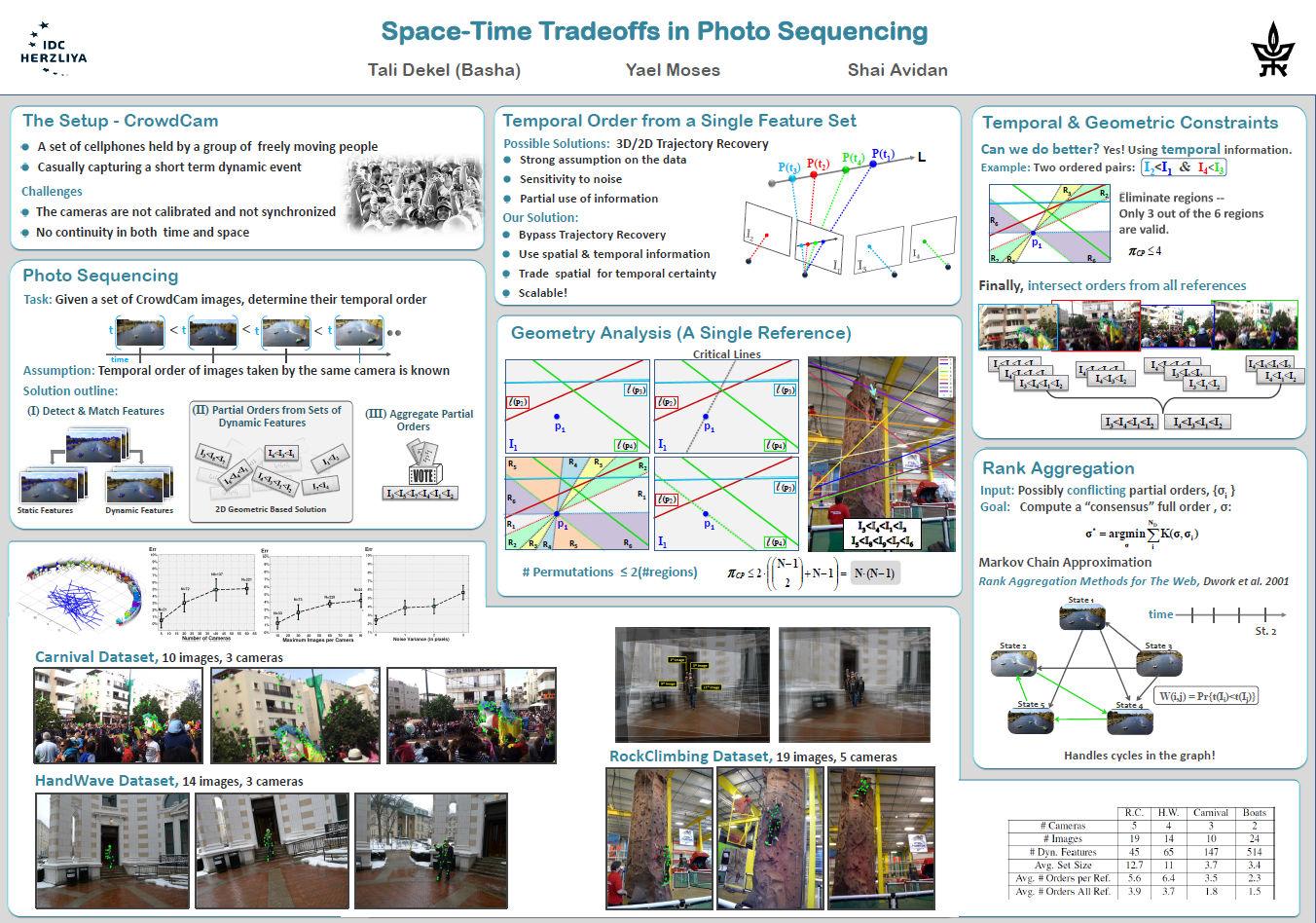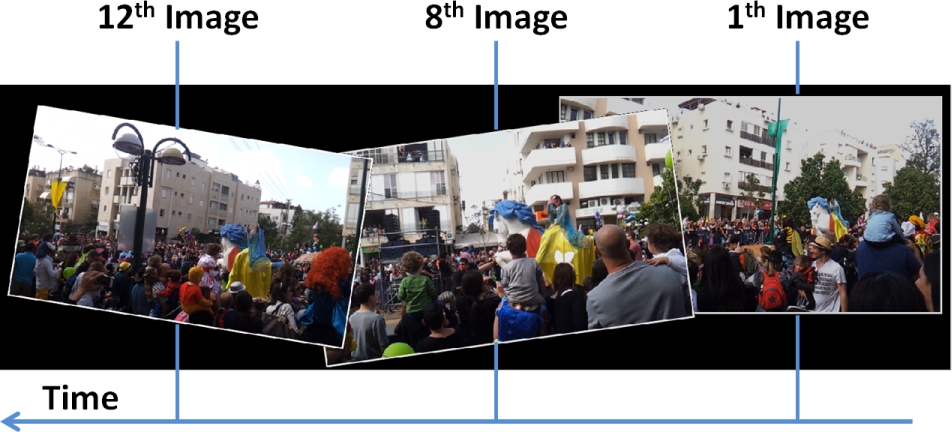| Space-Time
Tradeoffs in Photo Sequencing |
||||
| Tali Dekel (Basha) Yael Moses Shai Avidan | ||||
|
||||
| Abstract | ||||
| Photo-sequencing was
proposed by Basha
et. al. as a way to recover the temporal order of a set of still
images, where images are taken voluntarily by a large number of
observers of a dynamic event. Hence, the images in the set are
unsynchronized and uncalibrated. Recovering the temporal order is a
first, crucial step for analyzing (or visualizing) the dynamic content
of the scene. We solve this problem using a geometric based method,
followed by rank aggregation. Our algorithm trades spatial certainty
for temporal certainty. Whereas Basha et. al. used two images taken
from the same static camera to eliminate uncertainty in space,
we
drop the static-camera assumption and replace it with temporal
information available from images taken from the same (moving) camera.
As a result, our method overcomes the limitation of the static-camera
assumption, and scales much better with the duration of the event and
number of images. We present successful results on both large scale
synthetic data (250 images) and challenging real data sets. |
||||
| Paper | ||||
|
"Space-Time
Tradeoffs in Photo
Sequencing", T.
Dekel (Basha), Y. Moses, and S. Avidan [PDF] |
||||
| Poster | ||||
 |
||||
| Results (Visualization) | ||||
